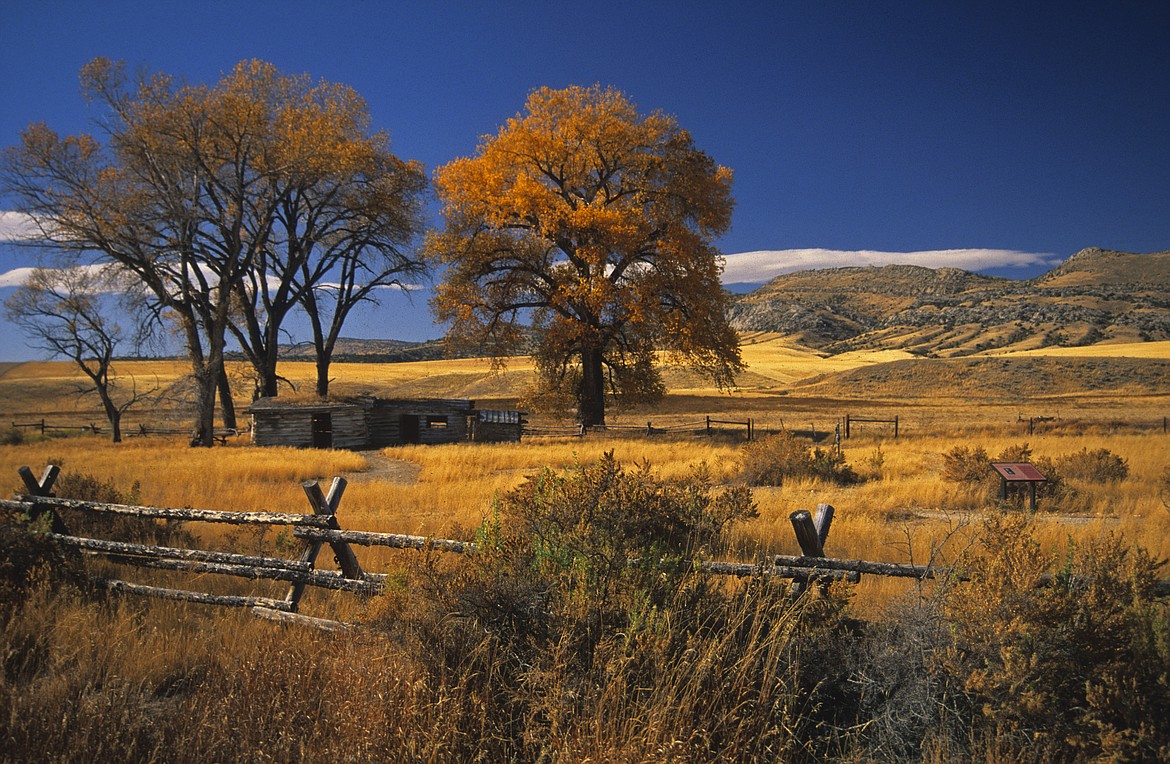Homestead Act Launches a New Era in Montana (part 1 of 3)
“As I looked across the rolling expanse of prairie, filled with the beauty of a Montana sunset, I sent up a little prayer of thanksgiving from my heart for this our very first home. Only a rectangle of prairie sod, raw and untouched by the hands of man, but to us it was a kingdom ....
“... We have no regrets; life is fuller and sweeter through lessons learned in privation, and around our homestead days some of life’s fondest memories still cling. We are of Montana, now and always ... I feel that creating a home and raising a family in Montana has been a grand success, and my cup seems filled to overflowing with the sweetness and joy of living.”
Pearl Price Robertson, a Big Sandy homesteader in 1911
In the dark, early years of conflict between the Northern and Southern states, when Civil War threatened to forever shatter all that the founding fathers had created, Abraham Lincoln signed a momentous piece of legislation. The Homestead Act of 1862 had little to do with the Civil War – at least not directly – but, like the war itself, it would dramatically shape the future destiny of the nation. Especially affected was the American West and, most notably, the soon-to-be-formed Territory of Montana. It would ultimately become the most heavily homesteaded state in America.
Under the original Homestead Act, heads of family could claim 160 acres of contiguous government land. To be eligible, an applicant had to be 21 years old, as well as a U.S. citizen or an alien who had filed for citizenship. Applicants had to live on the homestead for five years and make certain improvements to gain title to the land.
The prospects of settling on tracts of essentially free land – like the gold rush – drew the ambitious westward. Even as the Civil War experienced its violent death throes in the East, the Montana Post observed that the territory’s fertile, well-watered western valleys were “fast being settled up with farmers, many of whom came to Montana as a better class of miners and, after quitting their original pursuits, secure 160 acres of land … and go to work in true farmer fashion.”
Montana’s early homesteaders settled in remote but scenic places, such as the Madison, Gallatin, Deer Lodge, Prickly Pear and Bitterroot valleys. There, by selectively irrigating and protecting crops against the late spring and early autumn frosts, they produced fine harvests of grains, vegetables and fruits that fed the ravenous mining camps of the Northern Rockies.
Though their numbers were initially few, and their lives were unquestionably difficult, many of Montana’s first generation of homesteaders clearly recognized that land was the key to a stakeholdership in the great American dream. They understood that with land ownership came a level of independence, stability and opportunity that the vast majority of late-19th Americans craved. In numerous letters to friends and family back East, their optimism and confidence was unmistakable.
“I think I have as good a stock farm as there is anywhere,” wrote Joseph Bumby from Silver Star, Montana, in May 1871. “It is a beautiful place here in pleasant weather, thousands of acres of thick, green, luxuriant bunch grass … all around you with the thickly wooded snow-capped mountains in the distance … Sometimes I get almost discouraged, here all alone, camping out amongst the wild beasts, without any fence around my grain, at present … I have more to do than one person can attend to … but I am in strong hopes of making a good farm here …”
While homesteading typically offered settlers a more secure future than the area’s boom-bust gold camps, farming in Montana initially remained limited. Aridity, a pervasive get-rich-quick mentality and still-enormous Indian reservations combined to restrain the homesteader’s progress during the latter 1800s. With the long-awaited arrival of the railroads, a handful of sodbusters irrigated bottomlands along the Yellowstone, Missouri and Milk rivers, and a few even tried dry farming on the bench lands of northern and central Montana. But as the 20th century dawned, the eastern two-thirds of Montana remained essentially a wide open expanse of vacant public land. All that would soon change.
In the years following the Civil War, America’s Industrial Revolution set the stage for a pronounced agricultural transformation in Montana and elsewhere during the early 20th century. Steam and gas tractors, steel moldboard plows and steam-powered threshers now afforded the homesteader the means to farm far more efficiently and on a more profitable scale than in the horse- and hand-plow days. The industrial age also had created hungry urban populations and offered railways that conveniently connected Montana to those burgeoning markets. Land grant colleges and agricultural experiment stations simultaneously promoted a plethora of new-fangled dry-land farming techniques.
Derek Strahn is a Bozeman historian, teacher, historic preservationist, radio show personality and folk/blues musician.

